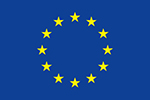Distefano V, Mannone M, Poli I, Mayer G. In: Villani, M., Cagnoni, S., Serra, R. (eds) Artificial Life and Evolutionary Computation. WIVACE 2023. Communications in Computer and Information Science, vol 1977. Springer, Cham. Conference Paper, March 2024.
.
Abstract
Diabetic kidney disease (DKD) is a serious complication of type-2 diabetes, defined prominently by a reduction in estimated glomerular filtration rate (eGFR), a measure of renal waste excretion capacity. However DKD patients present high heterogeneity in disease trajectory and response to treatment, making the one-model-fits-all protocol for estimating prognosis and expected response to therapy as proposed by guidelines obsolete. As a solution, precision or stratified medicine aims to define subgroups of patients with similar pathophysiology and response to the therapy, allowing to select the best drug combinations for each subgroup. We focus on eGFR when aiming to identify eGFR decline trends by clustering patients according to their eGFR trajectory shape-similarity.
The study involved 256 DKD patients observed annually for four years. Using the Fréchet distance, we built clusters of patients according to the similarity of their eGFR trajectories to identify distinct clusters. We formalized the trajectory-clustering approach through category theory. Characteristics of patients within different progression clusters were compared at the baseline and over time.
We identified five clusters of eGFR progression over time. We noticed a bifurcation of eGFR mean trajectories and a switch between two other mean trajectories. This particular clustering approach identified different mean eGFR trajectories. Our findings suggest the existence of distinct dynamical behaviors in the disease progression.


